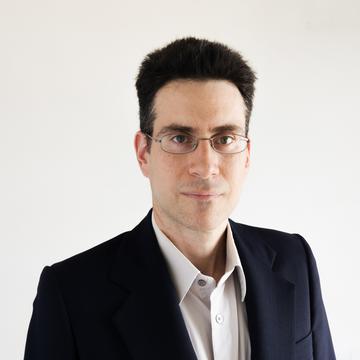Michail Stamatakis

Professor Michail Stamatakis
Professor of Computational Inorganic Chemistry
My research focuses on heterogeneous catalysis and is inspired by the urgent need for chemical technologies that promote a sustainable future for contemporary societies. It encompasses activities ranging from fundamental to applied, aiming at not only understanding how catalytic materials accelerate chemical reactions, but also guiding catalyst discovery to improve the efficiency of chemical transformations. Central to these activities is the development of computational methods able to capture the molecular-level processes underpinning catalysis. These methods are also applied to study reactions relevant to the conversion of alternative/renewable feedstocks into chemicals and fuels, the management of (greenhouse) gas emissions towards mitigating pollution and climate change, or the engineering of long-lasting catalytic materials for efficient industrial-scale operations.
Method development
Striving for high-fidelity modelling of catalytic reaction kinetics, our group has pioneered the Graph-Theoretical Kinetic Monte Carlo (GT-KMC) framework, which bridges the scale between zero temperature/pressure ab initio calculations (providing energy landscapes of reactions) and meso- or macro-scale observables, such as catalytic activity, selectivity and stability. We develop computationally efficient GT-KMC algorithms, adopting ideas from graph-theory to easily treat complex chemistries and making use of massively parallel computing architectures for simulation at unprecedented scales. We further implement these algorithms in our software Zacros, for the benefit of the research community. GT-KMC and Zacros have enabled researchers worldwide to study a diverse range of systems, including solid catalysts for CO2 utilisation or biomass valorisation, battery electrodes, carbon-based materials for thermal protection systems in hypersonic flight vehicles, and 2D-materials for photonics/optoelectronics applications.
Catalysis for biomass conversion
Biomass has attracted focus as a renewable resource that can be converted to fuels or chemicals and used on-site, contributing to a sustainable energy paradigm. Yet, understanding the pathways for such conversions and engineering effective catalysts is non-trivial. With colleagues at the University of Oxford and collaborators in the USA, we study various reactions for biomass conversion, e.g. hydrodeoxygenation, cycloaddition and oxidative coupling. Our investigations use ab initio calculations and KMC simulation, and focus on materials such as alloys, disulfides and zeolites. We seek to unravel the chemical pathways underpinning biomass conversion processes, and predict how catalytic performance is affected by the nature of the catalyst and the operating conditions.
Catalysis for gas emissions management
Pollutants such as carbon oxides (CO, CO2) and nitrogen oxides (N2O, NOx) are unavoidable products of fossil fuel combustion, and they are present in exhaust gases of personal vehicles. Emissions control technologies convert these pollutants to non-toxic compounds, reducing NOx and oxidising CO. While some of these technologies are well established, some fundamental aspects of the underlying catalytic mechanisms remain unclear. Moreover, recycling/utilising CO2, a major greenhouse gas, is paramount in mitigating climate change, yet challenging. Thus motivated, we adopt first-principles-based KMC simulation to elucidate fundamental aspects of catalysis for gas emissions management and CO2 utilisation. Of specific interest are transition metals, alloys, and transition metal carbides as catalysts, and we study the effects of surface morphology, adsorbate lateral interactions, and poisoning on catalytic performance.
Understanding and preventing catalyst poisoning
Catalyst poisoning due to carbon-based species is a major impediment to the productivity of industrial operations, incurring expenditures of billions of dollars p.a. to replace/regenerate deactivated catalysts. In collaboration with Johnson Matthey, we investigate the mechanisms of carbon-based poisoning of Ni-based catalysts for the methane-steam reforming process. The latter is the most common route for obtaining hydrogen in industry, being responsible for about 95% of hydrogen production worldwide. We focus on identifying the species that act as precursors to coke formation on the catalytic surface, understanding the relevant chemical pathways, predicting the rates at which coke is formed, and developing strategies to prevent it.
Associated Research Themes
Kinetics, Dynamics and Mechanism
Theory and Modelling in the Chemical Sciences
Energy and Sustainable Chemistry
Michail Stamatakis is Professor of Computational Inorganic Chemistry at Oxford Chemistry and Tutorial Fellow at Lady Margaret Hall, Oxford. He leads a group that develops and applies multiscale computational approaches to understand how heterogeneous catalysts accelerate chemical reactions. These approaches are made broadly available in the form of open-source, documented software for the benefit of the academic community and beyond. Michail collaborates extensively with experimentalists and industry, guiding the development of superior catalysts for chemical processes relevant to energy conversion and storage, as well as sustainable chemicals manufacturing. His kinetic Monte Carlo software Zacros (http://zacros.org) is used by hundreds of researchers worldwide and his research has received awards from the Royal Society of Chemistry (Faraday Division Horizon Prize, 2022) as well as the Alexander von Humboldt Foundation (Friedrich Wilhelm Bessel Research Award, 2023).
Michail joined Oxford Chemistry in 2023, prior to which he was Lecturer (2012-2017), Senior Lecturer (2017-2018), Associate Professor (2018-2022) and Professor (2022-2023) in the Chemical Engineering Department at University College London (UCL). He holds a Diploma in Chemical Engineering from the National Technical University of Athens, Greece (2004), and a PhD from Rice University, USA (2009), and has carried out post-doctoral research at the University of Delaware, USA (2009-2012). He is Fellow of the Royal Society of Chemistry (FRSC) and the Higher Education Academy (FHEA).




